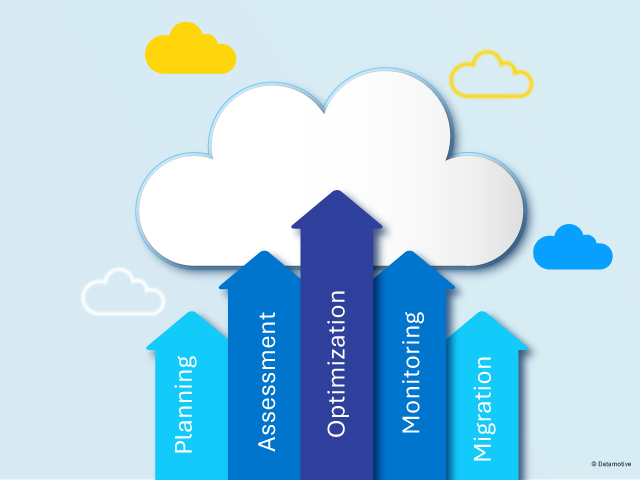Cloud migration is no longer a luxury, but a necessity for businesses that would like to keep up with the competition in this digital world. Moving your IT infrastructure and applications to the cloud can unlock an enormous amount of benefits, such as increased agility, improved scalability, cost savings, and enhanced security. However, proper strategy and execution are required to ensure a successful cloud migration. Here's the roadmap for on premise to cloud migration strategy:
1. Define Your "Why"
Go beyond general objectives such as "reduce costs". What specific business outcomes are you looking for? New product-line revenue? Rapid time-to-market for new product features? Superior customer experience?
Not all applications are equal. Start with those that will have the greatest impact on your business goals. Consider the business criticality, complexity, and potential cost savings. Your cloud migration strategy (7 Rs of cloud migration) should not be considered an independent undertaking. This should highly align with your broader business strategy to ensure long-term success.
2. Conduct a Comprehensive Assessment
Deep understanding of the existing IT infrastructure including applications, dependencies, data volumes, and performance requirements. Assess your organization's current cloud maturity. Determine where there are gaps in the skills of your IT team and train or hire accordingly.
Determine the volume, sensitivity, and compliance requirements of your data. A sound data migration plan should be put in place for ensuring security and integrity during this process.
3. Choose the Right Cloud Provider and Model
Compare and analyze various cloud providers (e.g., AWS, Azure, GCP) for their offerings, pricing models, service level agreements (SLAs), and compliance certifications.
Determine the best cloud deployment model for your needs:
- IaaS (Infrastructure as a Service): You manage operating systems and applications.
- PaaS (Platform as a Service): The provider manages the infrastructure and platform, allowing you to focus on application development.
- SaaS (Software as a Service): The provider manages the entire software stack, including hardware, software, and infrastructure.
Explore hybrid cloud solutions that bridge on-premises and cloud resources, or multi-cloud strategies using multiple providers for greater flexibility and redundancy.
4. Develop a Detailed Migration Plan
Break the migration plan into practical phases, begin with less critical workloads for gaining experience and building confidence. Plan your target cloud architecture based on scalability, performance, security, and cost optimization.
Select the appropriate data migration method based on the volume of data, sensitivity, and application requirements (for example, direct lift and shift, re-platforming, re-architecting).
5. Test, Validate, and Optimize
Fully test applications and workloads in the cloud environment for performance, reliability, and security. Go for Pilot migrations. Migrate a few small subsets of workloads to the cloud as a pilot project to identify and resolve issues that may crop up before migrating at scale.
Make regular checks and evaluate the usage of cloud and costs accrued; identify opportunities for optimization in resource allocation, cost-saving measures, and better general performance.
6. Foster a Cloud-Native Culture
Provide training and support to your IT team on cloud technologies, cloud migration best practices, and security measures. Adopt DevOps practices to accelerate development lifecycles, improve collaboration between development and operations teams, and enable continuous delivery.
Encourage experimentation and exploration of cloud-native technologies and services to drive innovation and business growth.
Key Considerations
- Implement robust security measures throughout the migration process, including data encryption, access control, and threat detection.
- Ensure your cloud environment complies with all relevant regulations and industry standards.
- Continuously monitor and optimize cloud spending to maximize ROI.
- Effectively communicate the benefits of cloud migration to your employees and address any concerns or resistance to change.
By cleverly cloud migration planning, executing, and continually optimizing the cloud migration strategy (AWS migration strategies), one can use the full potential of the cloud and gain considerable competitive advantage in today's dynamic business landscape. To make the cloud migration journey seamless, Datamotive’s EasyMigrate is what you need. Rech out to us for more information.
